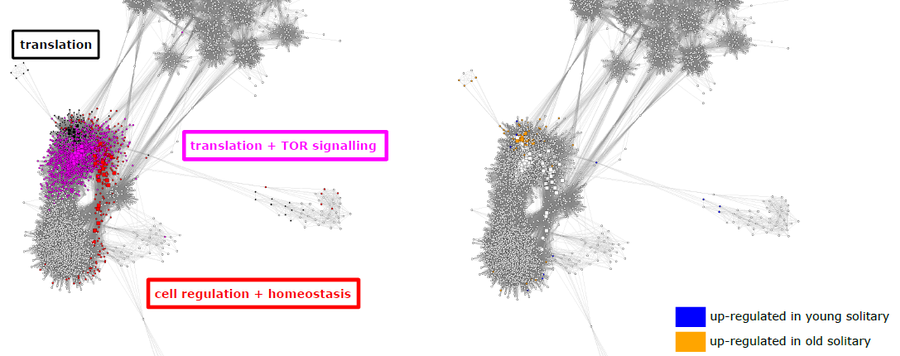
signatures of ageing associated with sociality in orchid bees
Eusocial insect queens are remarkable in their ability to maximise both fecundity and longevity, thus escaping the typical trade-off between these two traits. Several mechanisms have been proposed to underlie the remoulding of the trade-off, such as reshaping of the juvenile hormone pathway, or caste-specific susceptibility to oxidative stress. However, it remains a challenge to disentangle the molecular mechanisms underlying the remoulding of the trade-off in eusocial insects from caste-specific physiological attributes that have subsequently arisen. The socially polymorphic orchid bee Euglossa viridissima represents an excellent model to address the role of sociality per se in longevity as it allows direct comparisons of solitary and social individuals within a common genetic background. We investigated gene expression and juvenile hormone levels in young and old bees from both solitary and social nests. We found 902 genes to be differentially expressed with age in solitary females, including genes involved in oxidative stress, versus only 100 genes in social dominant females, and 13 genes in subordinate females. A weighted gene co-expression network analysis further highlights pathways related to ageing in this species, including the TOR pathway. Eleven genes involved in translation, apoptosis and DNA repair show concurrent age-related expression changes in solitary but not in social females, representing potential differences based on social status. Juvenile hormone titres did not vary with age or social status. Our results represent an important step in understanding the proximate mechanisms underlying the remodelling of the fecundity/longevity trade-off that accompanies the evolutionary transition from solitary life to eusociality.






